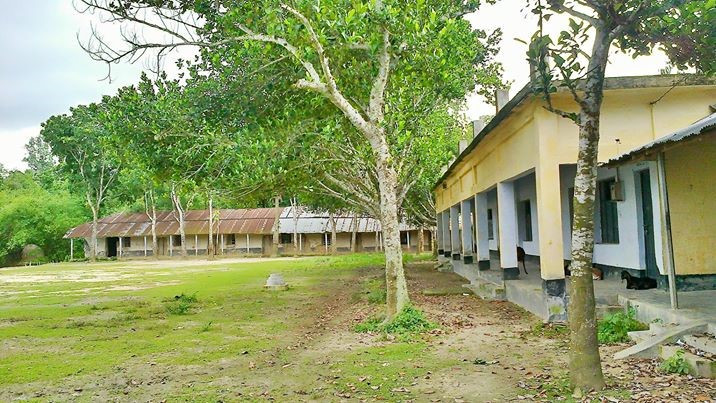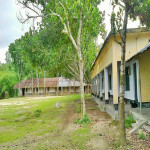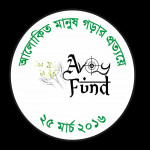প্রাচীনকালে শিক্ষা ব্যবস্থার ইতিহাস
বিশ্বের প্রাচীন শিক্ষা ব্যবস্থার মধ্যে মাদরাসা শিক্ষা অন্যতম। এ ধারার প্রবর্তক মহানবী (স.) স্বয়ং। এ শিক্ষাব্যবস্থার মূলগ্রন্থ হলো ‘আল কোরআন’। মহান আল্লাহর প্রেরিত দূত জিবরাইল (আ.) পবিত্র কোরআনের আয়াত আল্লাহর তরফ হতে মহানবী (স.) এর কাছে নিয়ে আসতেন। নবীজী সেগুলো নিজে আয়ত্ত করতেন এবং সাহাবীদেরকে মুখস্থ করাতেন। অন্যদিকে মহানবী (স.) কর্তৃক প্রদত্ত কথা, বাণী ও নির্দেশনা হাদিসরূপে গৃহীত হয় এবং পরবর্তীতে মাদরাসা শিক্ষার মূল বিষয়বস্তু হিসেবে প্রতিষ্ঠিত হয়। সুতরাং আল কোরআন এবং আল হাদিস হলো মাদরাসা শিক্ষা ব্যবস্থার ভিত্তি। তখন মাদরাসা শিক্ষার প্রধান স্থান ছিলো মসজিদ। আব্বাসীয় বংশের শাসকরা মাদরাসা শিক্ষার পৃষ্ঠপোষকতা করতেন। তাদের অনেকেই মসজিদ কেন্দ্রিক মাদরাসা নির্মাণ করা ছাড়াও আলাদা মাদরাসা প্রতিষ্ঠা করেন। এ সময় মসজিদে শিশুদের প্রাথমিক শিক্ষাদান বাধ্যতামূলক ছিলো।
উপমহাদেশে মাদ্রাসা শিক্ষার শুরুর ইতিহাস
ভারতবর্ষে মাদ্রাসা শিক্ষার সূচনা হয় ৭১১ সালে, মুহাম্মদ বিন কাসিমের সিন্ধু বিজয়ের পর পরই। সিন্ধু বিজয়ের হাত ধরে ভারতে মাদ্রাসা শিক্ষা বা ইসলামী শিক্ষার যাত্রা শুরু হলেও প্রথম প্রাতিষ্ঠানিক মাদ্রাসা প্রতিষ্ঠিত হয় এরও বেশ কিছুকাল পর। মুহাম্মদ ঘুরী ১২০০ শতকের শেষদিকে ভারতে তুর্কি সাম্রাজ্য প্রতিষ্ঠা করেন। ১১৯১ সালে তিনি আজমীরে একটি মাদ্রাসা প্রতিষ্ঠা করেন।
এরপর মোগল আমলে ভারতবর্ষে মাদ্রাসা শিক্ষাব্যবস্থার বিস্তার ঘটে। ভারতবর্ষে মুসলিম শাসকদের শাসনামলে শিক্ষাব্যবস্থা ও ধর্ম অঙ্গাঙ্গিভাবে জড়িত ছিল। ১৯৫৪ খ্রিস্টাব্দে প্রকাশিত UNESCO-i Studies on Compulsory Education-এ উল্লেখ করা হয়েছে : ‘মুসলিম শাসনামলে শিক্ষা ও ধর্মকে অত্যন্ত অঙ্গাঙ্গিভাবে বিবেচনা করা হতো।’ সে আমলে মুসলিম পরিবারের শিশুদের হাতেখড়ি হতো পবিত্র কোরআনের শিক্ষার মাধ্যমে।
ইতিহাসবিদ এ আর মল্লিক লিখেছেন : ‘বাংলার মুসলমানদের অতীত ইতিহাস পর্যালোচনা করলে দেখা যায় যে যখন কোনো সন্তানের বয়স চার বছর চার মাস চার দিন পূর্ণ হতো, তখন তার বিদ্যাশিক্ষার সূচনা হতো। একটি বিশেষ অনুষ্ঠানের মাধ্যমে পবিত্র কোরআনের কিছু অংশ শিশুকে পাঠ করে শোনানো হতো। শিশু তা পুনরাবৃত্তি করত। এ ছিল প্রতিটি মুসলিম পরিবারের অপরিহার্য প্রথা।
১১৯৭ সালে বখতিয়ার খিলজির সামরিক অভিযানের পর থেকে মাদ্রাসা ও মক্তব শাসকদের অনুদান পেতে থাকে। বখতিয়ার খিলজি নিজে এবং তাঁর পরবর্তী শাসকরাও বেশ কিছু মাদ্রাসা স্থাপন করেন।
মোগল আমলে মাদ্রাসার সংখ্যা বহু গুণ বেড়ে যায়। সম্রাট বাবরের আমলের (১৫২৬-১৫৩০) রাজদরবারের কাগজপত্র থেকে জানা যায়, বাবরের প্রশাসন মনে করত, জনগণের শিক্ষা হচ্ছে শাসকের দায়িত্ব। আকবরের আমলে শিক্ষাব্যবস্থাকে উন্নত করার জন্য একটি বিশেষ বিভাগ প্রতিষ্ঠা করা হয়। সম্রাট জাহাঙ্গীরের আমলে (১৬০৫-১৬২৭) একটি বিশেষ আইন জারি ছিল যে যখন কোনো বিদেশি নাগরিক বা কোনো দেশীয় ব্যবসায়ী কোনো উত্তরাধিকারী না রেখে মৃত্যুবরণ করতেন, তখন তার রেখে যাওয়া ভবনগুলো মেরামত করে মাদ্রাসা কিংবা অন্য শিক্ষাপ্রতিষ্ঠানকে দেওয়া হতো।
মাদ্রাসায় শিক্ষিত উলামাদের সঙ্গে ঘনিষ্ঠ সম্পর্ক গড়ে ওঠে মোগল শাসকদের। এমনকি কোনো কোনো সম্রাট আলেমদের যুদ্ধক্ষেত্রেও নিয়ে যেতেন প্রয়োজনীয় পরামর্শের জন্য।
ইংরেজদের দ্বারা মাদ্রাসা শিক্ষা ব্যবস্থার অবনতির শুরু
১৭৫৭ সালে পলাশী যুদ্ধে নবাব সিরাজউদ্দৌলার পরাজয়, ১৮৫৭ সালে সিপাহি বিপ্লবের পর গোটা পাক-ভারত উপমহাদেশে ব্রিটিশ বেনিয়াদের চূড়ান্ত আধিপত্য প্রতিষ্ঠিত হয়। ব্রিটিশরা এসেই মুসলমানদের সমূলে উৎপাটনের জন্য সর্বশক্তি প্রয়োগ করে। তারা চিন্তা করে, রাজ্যহারা মুসলমানদের অর্থনৈতিক, সামাজিক, প্রশাসনিক ও ধর্মীয় দিক থেকে পঙ্গু ও সর্বস্বান্ত করতে না পারলে মুসলমানরা সুযোগ পেলেই ক্ষমতা দখলের লড়াই শুরু করবে। তাই তারা মুসলমানদের শিক্ষাব্যবস্থা আমূল পরিবর্তনে মনোযোগ দেয়।
প্রথমেই তারা তৎকালীন সবচেয়ে জনপ্রিয় ও প্রভাবশালী শিক্ষামাধ্যম কওমি মাদ্রাসা শিক্ষাব্যবস্থা বন্ধ করার ফন্দি বের করে। গবেষক এ জেড এম শামসুল আলম লিখেছেন : ‘বখতিয়ার খিলজির বাংলা জয়ের পর থেকে প্রায় ৫০০ বছর পর্যন্ত সুবে বাংলা ছিল জ্ঞানচর্চার একটি কেন্দ্র। মুসলিম সুবাদার, সুলতান, নায়েব, নাজিমগণ মাদ্রাসা ও খানকার জন্য উদার হস্তে দান করতেন। নগদ অর্থ যা দিতেন, লাখেরাজ সম্পদ দিতেন তার চেয়ে অনেক বেশি।
আলিয়া মাদ্রাসা ইতিহাস
১৭৮০ সালে কলকাতা আলিয়া মাদ্রাসা প্রতিষ্ঠা করা হলে, পরবর্তী সময়ে মাদ্রাসার সিলেবাস ও শিক্ষা সংস্কারের জন্য বিভিন্ন সময় কমিটি গঠন করা হয়। ১৭৯১ সালে কলকাতা মাদ্রাসার পরিচালনা পর্ষদ প্রথমবারের মত শিক্ষা কারিকুলাম ও সিলেবাস প্রবর্তন করে। এ সিলেবাস কলকাতা আলিয়া মাদ্রাসায় বাস্তবায়ন করা হয় এবং এই মাদ্রাসার অধিভুক্ত বাংলা, আসাম, বিহার ও উড়িষ্যা প্রভৃতি অঞ্চলের সকল মাদ্রাসায়ও বাস্তবায়ন করা হয়। এরপর ১৮৬৯ সালে নতুন কমিটি গঠন করে আবারো পাঠ্যসূচিতে কিছুটা সংশোধনী আনা হয়। ১৮৭১ সালে বিচারপতি নরম্যান কমিটি বেঙ্গল মাদ্রাসা শিক্ষা ব্যবস্থার কিছু পরিবর্তন সাধন করে।
বিচারপতি নরম্যান কমিটি কর্তৃক বেঙ্গল মাদ্রাসা শিক্ষার অজানা ইতিহাস
কলকাতা মাদ্রাসার এই শিক্ষা ব্যবস্থা পূর্ব বাংলায় ছড়িয়ে দিতে ১৮৭৩ সালে মহসিন ট্রাস্টের অর্থে কিছু মাদ্রাসা স্থাপন করেন যা নিম্নে বর্ণিত হলোঃ
ক। ঢাকা মাদ্রাসা -বর্তমান কবি নজরুল সরকারি কলেজ, ঢাকা ও ইসলামিয়া সরকারি উচ্চ বিদ্যালয়, ঢাকা।
খ। চট্টগ্রাম মাদ্রাসা - বর্তমানে সরকারি হাজী মুহাম্মদ মহসিন কলেজ, চট্টগ্রাম ও হাজী মুহাম্মদ মহসিন সরকারি উচ্চ বিদ্যালয়, চট্টগ্রাম।
গ। রাজশাহী মাদ্রাসা - বর্তমানে হাজী মুহম্মদ মুহসীন সরকারি উচ্চ বিদ্যালয়, রাজশাহী।
এছাড়াও ১৮৮২ সালের হান্টার কমিটির রিপোর্টের ৩৬টি সুপারিশ ১৮৮৪ সালের মধ্যে বাস্তবায়িত হলে শিক্ষা ব্যবস্থার মধ্যে গতিশীলতা আসে। ১৯০৭ সালে ব্রিটিশ সরকারের কলকাতা কনফারেন্সে কলকাতা আলিয়া মাদ্রাসাকে স্নাতকোত্তর (মাস্টার্স) সমমানের তিন বছরের টাইটেল ক্লাস খোলার অনুমতি দেওয়া হয়। ১৯১০ সালে অধ্যক্ষ এ এইচ হার্লের নেতৃত্বে গঠিত মোহমেডান এডুকেশন অ্যাডভাইজরি কমিটি মাদ্রাসা শিক্ষা ব্যবস্থায় আরো কিছু সংস্কার সাধন করে।
আধুনিককালে বাংলাদেশে মাদ্রাসা শিক্ষা
আধুনিক বাংলাদেশে, মাদরাসা শিক্ষা সাধারণ শিক্ষার পাশাপাশি শিক্ষা ব্যবস্থার একটি গুরুত্বপূর্ণ শাখা। মাদ্রাসা শিক্ষা বাংলাদেশের শিক্ষাক্ষেত্রে একটি উল্লেখযোগ্য স্থান দখল করে আছে, যা শিক্ষার্থীদের আধ্যাত্মিক ও নৈতিক বিকাশে অবদান রাখে।মাদ্রাসা শিক্ষার্থীরাইসলামী শিক্ষা ও সংস্কৃতি সংরক্ষণ ও প্রচারে গুরুত্বপূর্ণ ভূমিকা পালন করেছে। বর্তমানে বাংলাদেশে মাদরাসা শিক্ষার আধুনিকীকরণের ফলে শিক্ষার্থীরা কুরআন ও আরবি ভাষা চর্চার সুযোগ বেশি পাচ্ছে। ঢাকা, সিলেট এবং বগুড়ায় তিনটি সরকারি আলিয়া মাদরাসা রয়েছে। বাংলাদেশে প্রতিষ্ঠিত মাদরাসাগুলো এবতেদায়ি, দাখিল, আলিম, ফাজিল ও কামিল এই পাঁচ স্তরে শিক্ষাকার্যক্রম পরিচালনা করে। দেশের সকল মাদরাসায় কুরআন পাঠ অত্যাবশ্যকীয়। এছাড়াও কুরআন বুঝার জন্য হাদিস, ফিকাহ্, আকাঈদ, আরবি ভাষা ও সাহিত্যসহ ইসলামের মৌলিক বিষয়াদির পাশাপাশি বাংলা, ইংরেজি, গণিত, বিজ্ঞান, ইতিহাস, অর্থনীতি, পৌরনীতি, রাষ্ট্রবিজ্ঞান, কৃষি, কম্পিউটার, কারিগরি প্রভৃতি বিষয় শেখানো হয়। পাঠ্যক্রমে ধর্মীয় এবং সাধারণ শিক্ষার সমন্বয় অন্তর্ভুক্ত রয়েছে, যার লক্ষ্য শিক্ষার্থীদের একটি সামগ্রিক বিকাশ ঘটানো।
মাদরাসা শিক্ষা ইসলামী ঐতিহ্য সংরক্ষণে, ধর্মীয় মূল্যবোধের প্রচারে এবং শিক্ষার্থীদের মধ্যে সাংস্কৃতিক পরিচয়ের বোধ লালন করতে গুরুত্বপূর্ণ ভূমিকা পালন করেছে। এটি ব্যক্তির বুদ্ধিবৃত্তিক এবং নৈতিক বিকাশে অবদান রেখেছে, তাকে দেশের দায়িত্বশীল নাগরিক হতে প্রস্তুত করছে।
History of the education system in ancient times
Madrasa education is one of the oldest education systems in the world. The founder of this system was the Holy Prophet (PBUH). The main text of this education system is the Quran. The messenger of Allah, Jibraeel (PBUH), used to bring the verses of the Holy Quran to the Holy Prophet (PBUH). The Prophet himself mastered them and made his companions memorize them. On the other hand, the words, sayings and instructions given by the Holy Prophet (PBUH) were accepted as Hadith and later established as the main content of Madrasa education. Therefore, Al-Quran and Al-Hadith are the basis of the Madrasa education system. At that time, the main place of Madrasa education was the mosque. The rulers of the Abbasid dynasty patronized Madrasa education. Many of them established separate Madrasas in addition to building mosque-centered Madrasas. At that time, primary education of children in the mosque was mandatory.
History of the beginning of madrasa education in the subcontinent
Madrasa education in India began in 711, soon after the conquest of Sindh by Muhammad bin Qasim. Although the journey of madrasa education or Islamic education in India began with the conquest of Sindh, the first institutional madrasa was established some time later. Muhammad Ghuri established the Turkish Empire in India in the late 1200s. In 1191, he established a madrasa in Ajmer.
Then, the madrasa education system spread in India during the Mughal period. During the rule of Muslim rulers in India, education and religion were closely related. It is mentioned in the UNESCO-i Studies on Compulsory Education published in 1954: 'Education and religion were considered very closely related during Muslim rule.' During that period, children of Muslim families were initiated through the teaching of the Holy Quran.
Historian A. R. Mallick writes: ‘A review of the past history of the Muslims of Bengal shows that when a child reached the age of four years, four months and four days, his education began. Through a special ceremony, some parts of the Holy Quran were recited to the child. The child would repeat it. This was an essential custom in every Muslim family.
After the military campaign of Bakhtiyar Khilji in 1197, madrasas and maktabs began to receive grants from the rulers. Bakhtiyar Khilji himself and his subsequent rulers also established several madrasas.
The number of madrasas increased many times during the Mughal period. From the court documents of Emperor Babur’s reign (1526-1530), it is known that Babur’s administration believed that the education of the people was the responsibility of the ruler. During Akbar’s reign, a special department was established to improve the education system. During the reign of Emperor Jahangir (1605-1627), there was a special law that when a foreign citizen or a local businessman died without leaving any heirs, the buildings he left behind were to be repaired and given to a madrasa or other educational institution. The Mughal rulers developed close relations with the scholars educated in the madrasas. Some emperors even took the scholars to the battlefield for necessary advice.
The British began to degrade the Madrasa education system
After the defeat of Nawab Siraj-ud-Daula in the Battle of Palashi in 1757 and the Sepoy Rebellion in 1857, the British established their ultimate dominance over the entire Indo-Pak subcontinent. The British immediately used all their power to eradicate the Muslims. They thought that if they could not cripple and eliminate the stateless Muslims economically, socially, administratively and religiously, the Muslims would start a struggle to seize power whenever they got the opportunity. Therefore, they focused on radically changing the education system of the Muslims.
First, they devised a plan to close the Qawmi Madrasa education system, the most popular and influential medium of education at that time. Researcher AZM Shamsul Alam writes: 'From the time of Bakhtiar Khilji's conquest of Bengal, the province of Bengal was a center of knowledge for about 500 years. Muslim subadars, sultans, naibs and nazims generously donated to madrasas and khanqas. What he would have given in cash was much more than what he would have given in wealth.
History of Alia Madrasa
When the Calcutta Alia Madrasa was established in 1780, committees were formed at various times to reform the syllabus and education of the madrasa. In 1791, the Board of Directors of the Calcutta Madrasa introduced the curriculum and syllabus for the first time. This syllabus was implemented in the Calcutta Alia Madrasa and was also implemented in all the madrasas affiliated to this madrasa in Bengal, Assam, Bihar and Orissa. Then in 1869, a new committee was formed and some amendments were made to the curriculum again. In 1871, the Justice Norman Committee made some changes to the Bengal Madrasa education system.
Unknown history of Bengal Madrasa education by Justice Norman Committee
In 1873, to spread this education system of Calcutta Madrasa in East Bengal, some Madrasas were established by Mohsin Trust, which are described below:
A. Dhaka Madrasa - Present Kabi Nazrul Government College, Dhaka and Islamia Government High School, Dhaka.
B. Chittagong Madrasa - Present Government Haji Muhammad Mohsin College, Chittagong and Haji Muhammad Mohsin Government High School, Chittagong.
C. Rajshahi Madrasa - Present Haji Muhammad Mohsin Government High School, Rajshahi.
In addition, when the 36 recommendations of the Hunter Committee report of 1882 were implemented by 1884, there was a dynamic in the education system. In 1907, the Calcutta Conference of the British Government allowed the Calcutta Aliya Madrasa to open a three-year title class equivalent to a postgraduate (master's) degree. The Mohammedan Education Advisory Committee, formed in 1910 under the leadership of Principal A.H. Harle, made some further reforms in the madrasa education system.
Madrasa Education in Modern Bangladesh
In modern Bangladesh, madrasa education is an important branch of the education system along with general education. Madrasa education occupies a significant place in the education sector of Bangladesh, which contributes to the spiritual and moral development of students. Madrasa students have played an important role in preserving and promoting Islamic education and culture. Currently, as a result of the modernization of madrasa education in Bangladesh, students are getting more opportunities to practice the Quran and Arabic language. There are three government Aliya Madrasas in Dhaka, Sylhet and Bogra. The madrasas established in Bangladesh conduct educational programs at five levels: Ebtedayi, Dakhil, Alim, Fazil and Kamil. Quran reading is essential in all madrasas in the country. In addition, to understand the Quran, basic Islamic subjects including Hadith, Fiqh, Aqa'id, Arabic language and literature, as well as Bengali, English, mathematics, science, history, economics, civics, political science, agriculture, computers, technology, etc. are taught. The curriculum includes a combination of religious and general education, aiming at the holistic development of students. Madrasa education has played an important role in preserving Islamic traditions, promoting religious values, and fostering a sense of cultural identity among students. It has contributed to the intellectual and moral development of the individual, preparing him to be a responsible citizen of the country.



